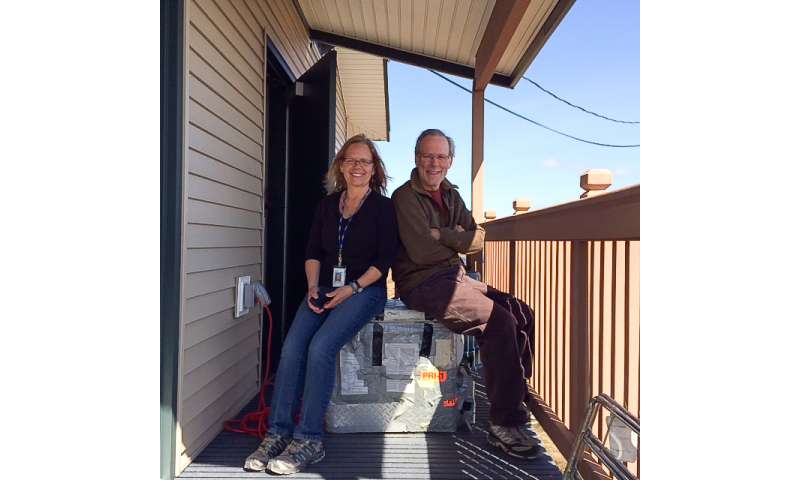Alaska research center moves science from bench to bedside

Alaska and Montana have formed a collaborative clinical and translational research center to address the health priorities of Alaska Native and American Indian people.
Led by Professor Allen Harmsen at Montana State University, in collaboration with the University of Alaska Fairbanks, the center's primary goal is to increase the number of scientists who can work effectively with indigenous people. The center is funded with a five-year, $20 million award from the National Institutes of Health.
"The people we want to attract are scientists in Alaska and Montana who have maybe thought that their work could be clinical or translational, meaning working with humans, but don't know how to transition their science in that direction," said the new center's co-program director, Bert Boyer. He also directs the Center for Alaska Native Health Research at the UAF Institute of Arctic Biology.
Other collaborators include the Alaska Native Tribal Health Consortium, Alaska's Southcentral Foundation, University of Alaska Anchorage, University of Montana and the Blackfeet Community College in Montana.
The center will provide mentoring, training and research opportunities, including project funds, to scientists in Alaska and Montana working in five core areas: professional development, pilot research projects, epidemiology and biostatistics, research design and evaluation, and community engagement and outreach.
American Indian and Alaska Native communities are reported to experience the most significant health disparities of any ethnic or racial group in the United States.
"Our goal is to build both Alaska's and Montana's capacity to successfully address the health priorities of American Indian and Alaska Native people," said Boyer. "Through the Center for Alaska Native Health Research, we have developed considerable expertise in community-based participatory research in Alaska."
UAF will lead the community engagement and outreach core.
"The UAF core will provide guidance in community-based participatory research and offer regional support to navigate the development of respectful research partnerships with American Indian and Alaska Native people in Montana and Alaska," said Scarlett Hopkins, a researcher at CANHR.
Hopkins will lead a team of site directors at the University of Montana, Montana State University, Blackfeet Community College and Southcentral Foundation in developing an innovative case study curriculum. The curriculum, based on American Indian-Alaska Native research experiences from study sites in Alaska and Montana, will be designed for scientists new to community-engaged research.
"Regional clinical research navigators will support investigators in the development and implementation of culturally appropriate translational research with American Indian and Alaska Native communities," said Hopkins.
The center will also seek to partner academic institutions that do not have medical schools with Native healthcare institutions to further encourage collaboration between academic and medical researchers.
"We anticipate this collaboration will grow sustainable programs in Alaska and Montana that will result in improved health of the communities we strive to serve," said Boyer.
Provided by University of Alaska Fairbanks